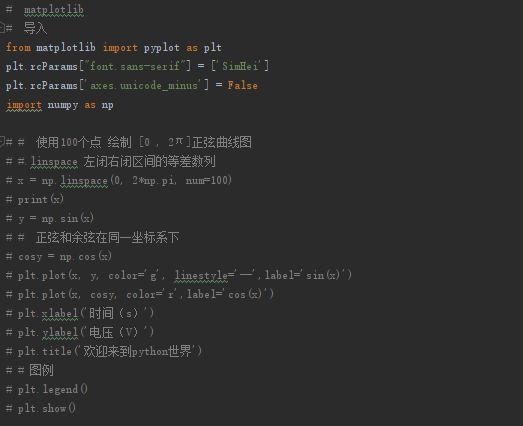#import jieba
#1.读取小说内容
with open('./novel/threeekingdom.txt','r',encoding='utf-8') as f:
words=f.read()
counts={}
#2.分词
#词语过滤,删除无关词,重复词
excludes = {"将军", "却说", "丞相", "二人", "不可", "荆州", "不能", "如此", "商议",
"如何", "主公", "军士", "军马", "左右", "次日", "引兵", "大喜", "天下",
"东吴", "于是", "今日", "不敢", "魏兵", "陛下", "都督", "人马", "不知"}
import jieba
# 1.读取小说内容
# 2. 分词
words_list = jieba.lcut(words)
# print(words_list)
for word in words_list:
if len(word) <= 1:
continue
else:
# 更新字典中的值
# counts[word] = 取出字典中原来键对应的值 + 1
# counts[word] = counts[word] + 1 # counts[word]如果没有就要报错
# 字典。get(k) 如果字典中没有这个键 返回 NONE
counts[word] = counts.get(word, 0) + 1
print(len(counts))
# 3. 词语过滤,删除无关词,重复词
counts['孔明'] = counts['孔明'] + counts['孔明曰']
counts['玄德'] = counts['玄德'] + counts['玄德曰'] +counts['刘备']
counts['关公'] = counts['关公'] +counts['云长']
for word in excludes:
del counts[word]
# 4.排序 [(), ()]
items = list(counts.items())
print(items)
def sort_by_count(x):
return x[1]
items.sort(key=sort_by_count, reverse=True)
for i in range(10):
# 序列解包
role, count = items[i]
print(role, count)
# 5得出结论
#lambda x1,x2....xn:表达式
sum_num=lambda x1,x2:x1+x2
print(sum_num(2,3))
#参数可以是无限多个,但是表达式只有一个
name_info_list=[
('张三',4500),
('李四',9900),
('王五',2000),
('赵六',5500),
]
name_info_list.sort(key=lambda x:x[1],reverse=True)
print(name_info_list)
stu_info=[
{"name":'zhangsan',"age":18},
{"name":'lisi',"age":30},
{"name":'wangwu',"age":99},
{"name":'zhaoliu',"age":3},
]
stu_info.sort(key=lambda i:i['age'])
import jieba
from wordcloud import WordCloud
# 1.读取小说内容
with open('./novel/threekingdom.txt', 'r', encoding='utf-8') as f:
words = f.read()
counts = {} # {‘曹操’:234,‘回寨’:56}
excludes = {"将军", "却说", "丞相", "二人", "不可", "荆州", "不能", "如此", "商议",
"如何", "主公", "军士", "军马", "左右", "次日", "引兵", "大喜", "天下",
"东吴", "于是", "今日", "不敢", "魏兵", "陛下", "都督", "人马", "不知",
"孔明曰","玄德曰","刘备","云长"}
# 2. 分词
words_list = jieba.lcut(words)
# print(words_list)
for word in words_list:
if len(word) <= 1:
continue
else:
# 更新字典中的值
# counts[word] = 取出字典中原来键对应的值 + 1
# counts[word] = counts[word] + 1 # counts[word]如果没有就要报错
# 字典。get(k) 如果字典中没有这个键 返回 NONE
counts[word] = counts.get(word, 0) + 1
print(len(counts))
# 3. 词语过滤,删除无关词,重复词
counts['孔明'] = counts['孔明'] + counts['孔明曰']
counts['玄德'] = counts['玄德'] + counts['玄德曰'] +counts['刘备']
counts['关公'] = counts['关公'] +counts['云长']
for word in excludes:
del counts[word]
# 4.排序 [(), ()]
items = list(counts.items())
print(items)
def sort_by_count(x):
return x[1]
items.sort(key=sort_by_count, reverse=True)
li = [] # ['孔明', 孔明, 孔明,孔明...., '曹操'。。。。。]
for i in range(10):
# 序列解包
role, count = items[i]
print(role, count)
# _ 是告诉看代码的人,循环里面不需要使用临时变量
for _ in range(count):
li.append(role)
# 5得出结论
text = ' '.join(li)
WordCloud(
font_path='msyh.ttc',
background_color='white',
width=800,
height=600,
# 相邻两个重复词之间的匹配
collocations=False
).generate(text).to_file('TOP10.png')
# matplotlib
# 导入
from matplotlib import pyplot as plt
plt.rcParams["font.sans-serif"] = ['SimHei']
plt.rcParams['axes.unicode_minus'] = False
import numpy as np
# 使用100个点 绘制 [0 , 2π]正弦曲线图
#.linspace 左闭右闭区间的等差数列
x = np.linspace(0, 2*np.pi, num=100)
print(x)
y = np.sin(x)
# 正弦和余弦在同一坐标系下
cosy = np.cos(x)
plt.plot(x, y, color='g', linestyle='--',label='sin(x)')
plt.plot(x, cosy, color='r',label='cos(x)')
plt.xlabel('时间(s)')
plt.ylabel('电压(V)')
plt.title('欢迎来到python世界')
# 图例
plt.legend()
plt.show()
# matplotlib
# 导入
from matplotlib import pyplot as plt
plt.rcParams["font.sans-serif"] = ['SimHei']
plt.rcParams['axes.unicode_minus'] = False
import numpy as np
# # 使用100个点 绘制 [0 , 2π]正弦曲线图
# #.linspace 左闭右闭区间的等差数列
# x = np.linspace(0, 2*np.pi, num=100)
# print(x)
# y = np.sin(x)
# # 正弦和余弦在同一坐标系下
# cosy = np.cos(x)
# plt.plot(x, y, color='g', linestyle='--',label='sin(x)')
# plt.plot(x, cosy, color='r',label='cos(x)')
# plt.xlabel('时间(s)')
# plt.ylabel('电压(V)')
# plt.title('欢迎来到python世界')
# # 图例
# plt.legend()
# plt.show()
# 柱状图
# import string
# from random import randint
# # print(string.ascii_uppercase[0:6])
# # ['A', 'B', 'C'...]
# x = ['口红{}'.format(x) for x in string.ascii_uppercase[:5] ]
# y = [randint(200, 500) for _ in range(5)]
# print(x)
# print(y)
# plt.xlabel('口红品牌')
# plt.ylabel('价格(元)')
# plt.bar(x, y)
# plt.show()
#饼图
# 散点图
# 均值为 0 标准差为1 的正太分布数据
# x = np.random.normal(0, 1, 100)
# y = np.random.normal(0, 1, 100)
# plt.scatter(x, y)
# plt.show(
x = np.random.normal(0, 1, 1000000)
y = np.random.normal(0, 1, 1000000)
# alpha透明度
plt.scatter(x, y, alpha=0.1)
plt.show()
# 绘制 三国top10 饼图
# 红楼梦 top1o人物分析


